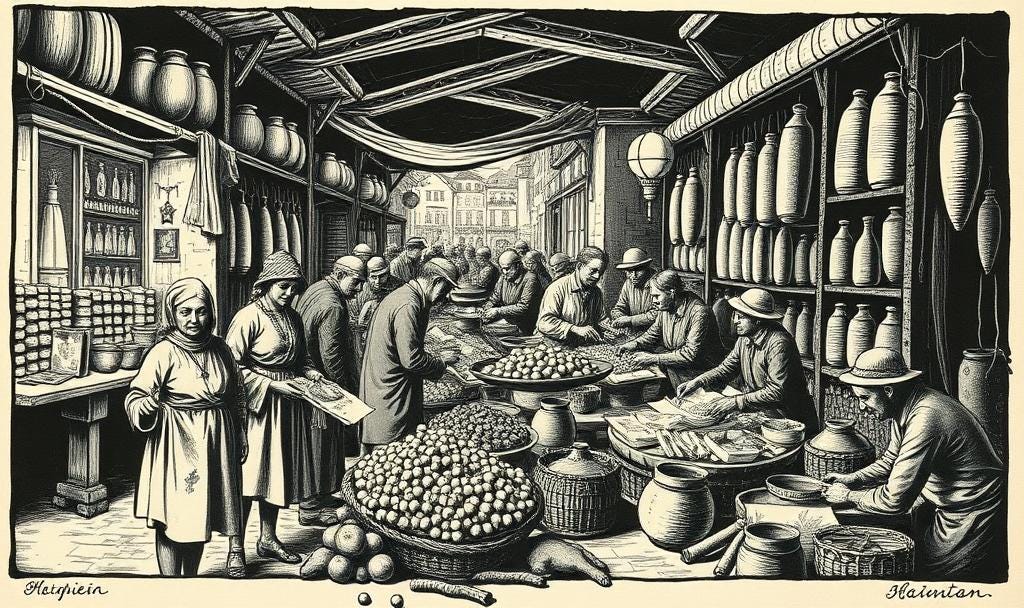Symbolic capital, social capital, human capital, cultural capital, and capital. Capital capital capital capital. What do they all mean and are they all the same type of thing?
Despite sharing the term “capital,” the conceptual differences between social capital and (financial) capital mean that they are not the same type of thing and thus should not be treated interchangeably.
What is social capital?
Social capital refers to the resources and benefits that arise from human networks, relationships, and shared norms. It's fundamentally about trust and reciprocity between people and groups. By extension, this trust can easily translate into the ability to mobilize others for collective action. Social capital also take the form of access to information and opportunities through social connections. Not only the quantity or the bonds, but the strength and quality of interpersonal bonds is also captured by the metaphor of social capital. Shared norms and values that facilitate cooperation also fall under the rubric of social capital.
Unlike financial capital, social capital generally increases with use rather than being depleted (it a negative substractible resource). It cannot be easily quantified or traded. Social capital also requires ongoing investment in relationships.
Capital in financial markets, by contrast, refers to financial assets that can be precisely measured and valued, traded for other assets or money, owned by specific entities, and deployed strategically for economic returns.
The key distinction lies in their fundamental nature: social capital is relational and embedded in human connections, while financial capital is transactional and can be reduced to numerical values. Financial capital operates through formal institutions and markets, whereas social capital operates through informal networks and shared understanding.
Consider how they grow: financial capital typically grows through investment and returns, while social capital grows through strengthening relationships and building trust. Financial capital can be rapidly accumulated or lost, but social capital tends to develop gradually through sustained interaction.
What makes this comparison particularly interesting is how they can interact - strong social capital in a community can facilitate access to financial capital through networking and reputation effects, while financial capital can be used to create environments and institutions that foster social capital development.
“Social capital” can more accurately be swapped with status, prestige, authority, reputation, standing, legitimacy, goodwill, trust, connections, shared norms, cooperation capabilities, respect, and recognized credentials.
The term "capital" was likely adopted to emphasize how these social phenomena can function as resources that can be accumulated, invested, and converted into other forms of advantage - similar to how financial capital works. However, this economic metaphor may obscure as much as it illuminates, since social relationships and status operate through fundamentally different mechanisms than financial assets.
A more direct sociological vocabulary might focus on terms like power relations, social hierarchies, status systems, network structures, cultural recognition, collective action capacity, and institutional legitimacy.
A little bit of history
The concept of symbolic capital was developed and popularized by French sociologist Pierre Bourdieu, particularly through his works in the 1970s and 1980s. The concept emerged from Bourdieu's effort to understand forms of power and domination that couldn't be reduced to economic relations. While studying Algerian society, he observed how honor, prestige, and reputation functioned as resources that could be accumulated and exchanged, similar to but distinct from economic capital.
Bourdieu formally introduced and elaborated the concept in key works such "The Forms of Capital" (1986).
The idea gained significant traction in sociology and related fields because it helped explain how social hierarchies are maintained through cultural and symbolic means, not just economic ones. It became part of Bourdieu's broader theoretical framework, which included other forms of capital (cultural, social, economic) and concepts like habitus and field.
The concept particularly resonated because it helped explain how certain forms of dominance persist even in supposedly meritocratic societies - showing how prestige and recognition function as real sources of power that can be accumulated and transmitted across generations.
On the other hand, the concept of social capital has multiple important origins, but three key figures stand out in its development and popularization.
Émile Durkheim first explored related ideas about social cohesion and collective solidarity in the late 19th century. This was followed by Max Weber who discussed similar concepts related to social networks and trust in economic and social interactions. However, it was Lyda Judson Hanifan who is often credited with the first explicit use of the term "social capital" in 1916. In a paper about rural school community centers, he described it as the tangible substance that counts for most in daily lives - goodwill, fellowship, sympathy, and social intercourse among individuals and families.
Human Capital
Another metaphorical use of the term capital is the concept of "human capital" which was primarily developed and popularized by economists associated with the University of Chicago, particularly Gary Becker and Theodore Schultz in the 1960s.
Theodore Schultz introduced the term in his 1961 American Economic Review article "Investment in Human Capital" and developed it further in his 1963 book "The Economic Value of Education". This was followed by Gary Becker who solidified and expanded the theoretical framework with his 1964 book "Human Capital: A Theoretical and Empirical Analysis, with Special Reference to Education"
The concept was initially controversial within economics because many economists were uncomfortable with treating human beings or their capabilities as capital. Furthermore, it seemed to some like a return to or justification of slavery-era thinking about humans as property. What’s more, there were methodological debates about how to measure and quantify human capital.
The concept gained widespread acceptance because it provided a framework for analyzing education and training as investments, helped explain wage differentials and income distribution, offered insights into economic growth and development, and influenced policy discussions about education and workforce development.
Conclusion
In short, don’t use the word “capital” when what you mean is status.




